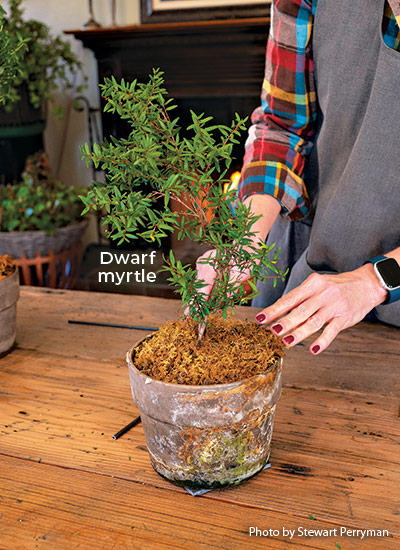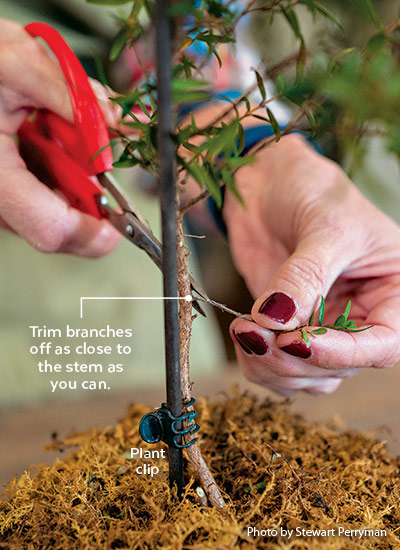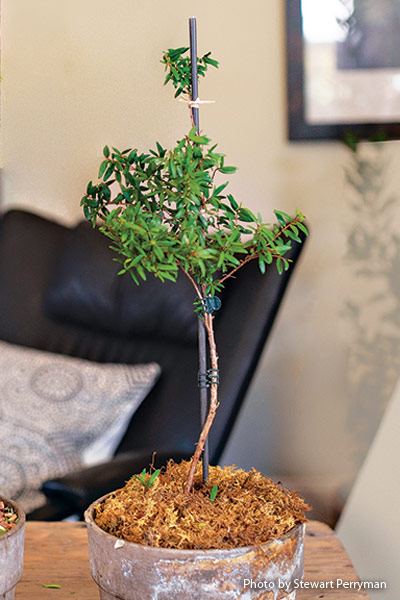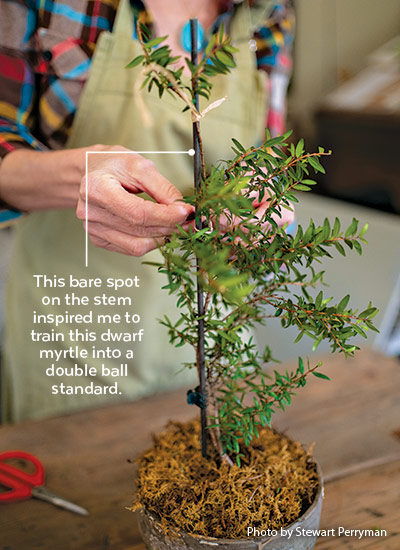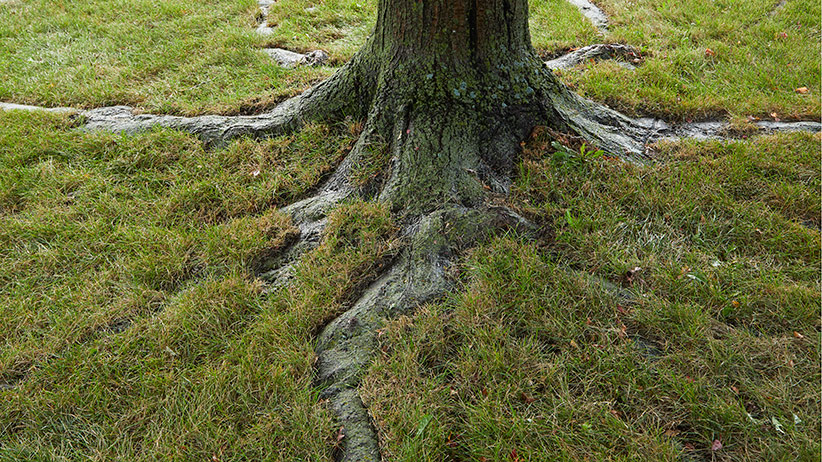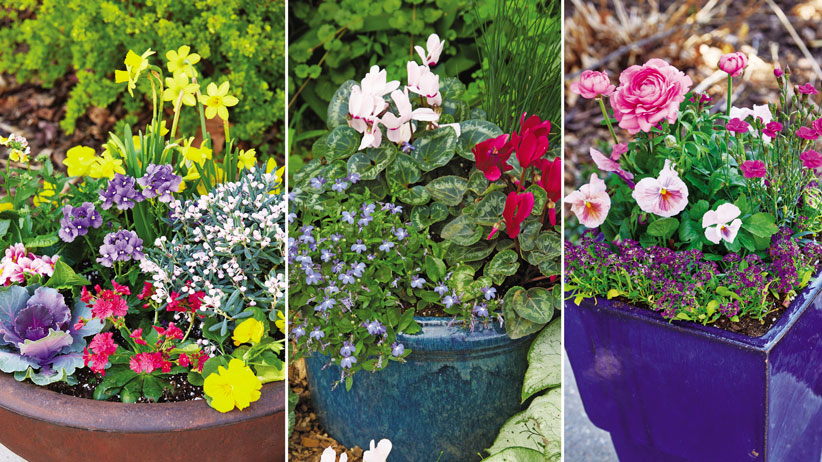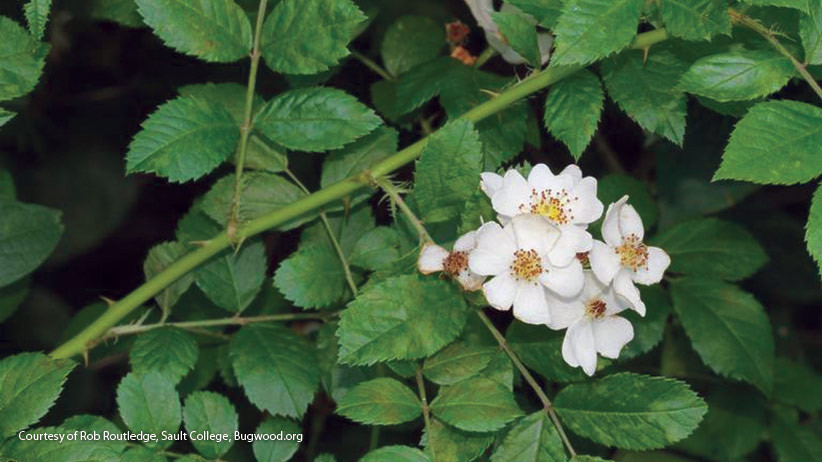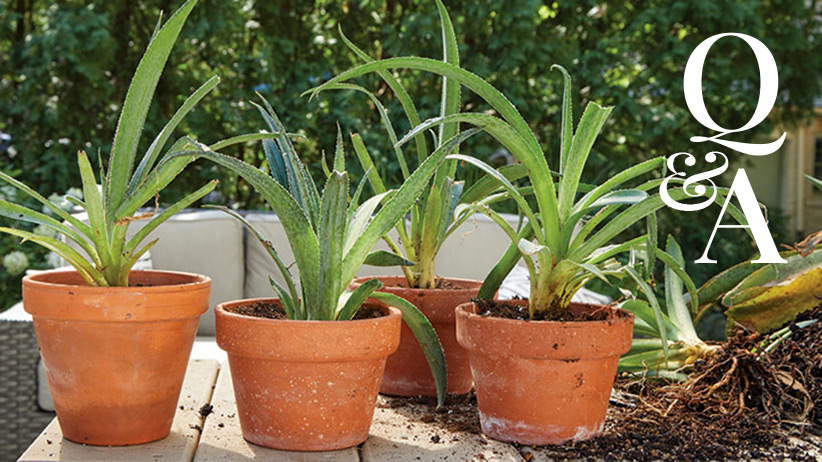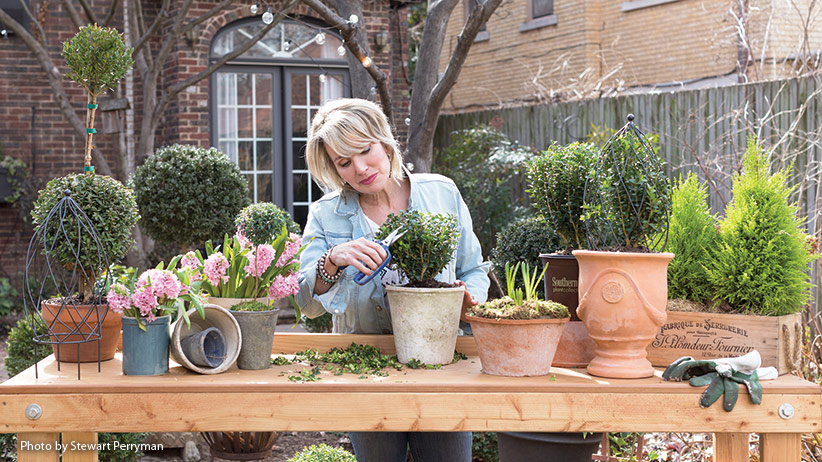
A passion for topiary
May I be a garden bully for just a moment? If you are a gardener, whether new or experienced, and have not yet dabbled in the joy, meditation and artistry of topiary, then I tell you, you simply must give it a go. Don’t let its mistaken reputation for being difficult, highly sophisticated and expensive fool you.
As you can see in my garden above, pruning plants into topiary forms gives you so many options for shapes and sizes. And it can be created out of the most common and inexpensive plants. A skinny, lanky boxwood (Buxus hybrid) in the clearance aisle may have great potential, as would a leggy basil (Ocimum basilicum) or coleus (Plectranthus hybrid) needing a good pinching to encourage bushiness. I often shop my own garden for topiary candidates: small junipers that have volunteered or been planted by birds or squirrels and trimmings of boxwood that took root after I clipped the hedge. Divisions or cuttings of herbs like rosemary (Salvia rosmarinus) may start small but over time can mature into beautiful specimens.
Follow Me:
Linda Vater | Garden Inspired Living
Potager Blog on Instagram
Enter Linda's Book Giveaway for The Elegant and Edible Garden!
The best plants for topiary
Plants used for topiary are typically evergreen with woody stems; have small needles, leaves or foliage; will develop a dense growing habit when frequently pruned; and have a compact or vertically upright and/or columnar growth pattern. But flowering plants like roses and lantana can be trained magnificently as well. I especially love clipping and training fragrant specimens like scented geranium (Pelargonium hybrid), rosemary and lavender (Lavandula spp. and hybrids).
For the impatient, wire forms can create “instant” topiary when you train long stems of rosemary, thyme, ivy (Hedera spp. and hybrids) or wire vine (Muhlenbeckia axillaris) around them. Obviously, however, depending on the scale and ambition of your topiary project, creating and training a topiary takes patience, a good eye and a steady hand. But most importantly, I have found it requires simple bravery, sharp shears and an attitude that one really can’t make a mistake. The worst haircuts ultimately grow out, after all.
You Might Also Like:
Ideas for Growing Herbs in Pots
Different Types of Lavender
DIY Spiral Topiary
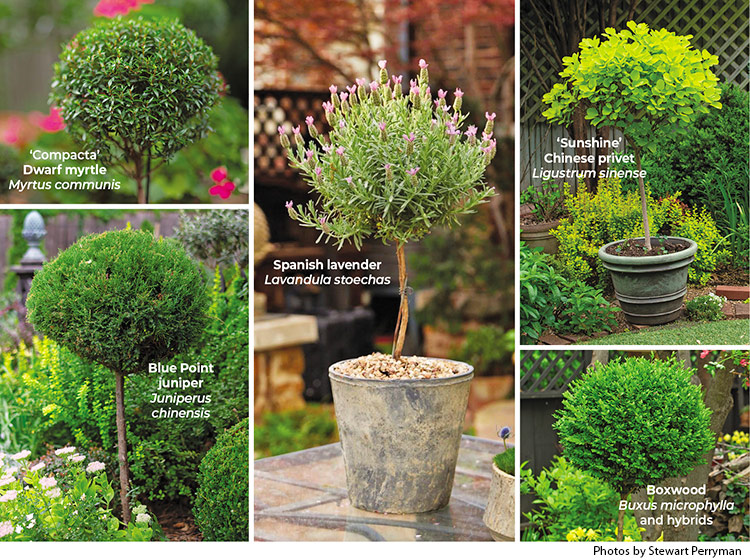
Favorite topiary plants
Selecting a good topiary candidate can be as easy as walking through your garden. Here are a few of my go-to plants.
-
‘Compacta’ dwarf myrtle Myrtus communis
Good tabletop topiary. Has an expensive, sophisticated look. Needs a lot of moisture: Never let plants dry out. Responds well to frequent pruning. USDA cold zones 8 to 10. -
Juniper Juniperus chinensis
Great for big outdoor specimens. Look for seedlings in your garden. Plants are very cold hardy and drought tolerant. USDA cold zones 4 to 9. -
Spanish lavender Lavandula stoechas
Lavender is a little more difficult to start from scratch. It’s a good one to buy already in topiary form. Not always long lived but fragrant and beautiful while it lasts. USDA cold zones 8 to 11. -
‘Sunshine’ Chinese privet Ligustrum sinense
This gold-foliaged shrub assumes topiary form very quickly when you start your own. Requires frequent pruning to maintain shape and size. USDA cold zones 6 to 10. -
Boxwood Buxus microphylla and hybrids
Classic plant medium for creating topiaries. I like to use them both in containers and in the garden. They provide much-needed architectural evergreen structure in winter and in the growing season. USDA cold zones 5 to 9.
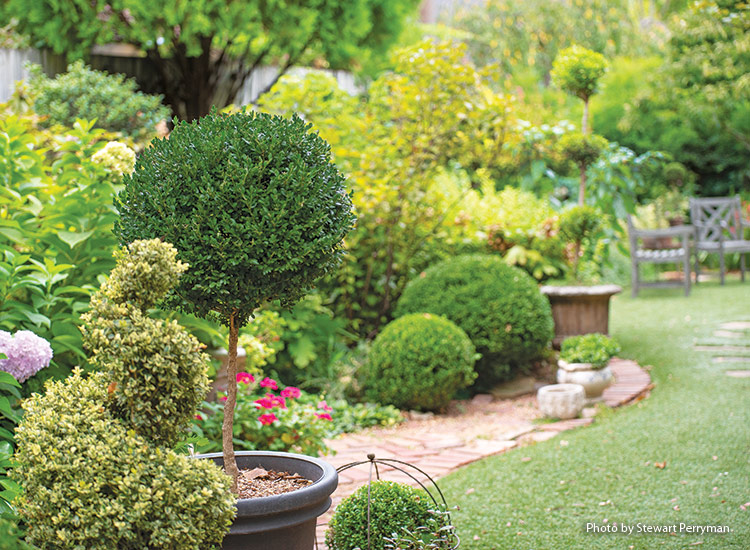
How to show off your topiary
In my own garden, I use topiaries in simple geometric forms like balls and cones planted rhythmically or as focal points around the landscape. But my favorite way to plant and stage them is in containers. I have huge potted specimens that are placed strategically in my outdoor living areas, and also collections of smaller plants grouped on plant stands and tables both inside and out. Sometimes I gather several in one spot, like on my potting bench. I love moving them about as they migrate between home and garden for holidays, interior decor or table centerpieces.
You Might Also Like:
Small Space English Garden
What to Do About Boxwood Blight
Tips for Adding Structure to Your Garden

Topiaries in containers
While topiaries can take complex forms, classic geometric ones like the simple lollipop shape, or standard, captivate me. Simple and elegant. Just like a topiary. Beautifully aged pots and carefully selected containers give your topiary, no matter how humble its origins, an expensive, finished look.

Finish off your topiary with a top dressing
Adding a top dressing to your topiary will complete the look and add another accent to the container. Here are a few of my favorite materials to use:
- Pea gravel
- Black stones
- Mini pinecones
- Moss
- Sphagnum moss
How to create a simple topiary
Once you start looking at the plant world through a topiary lens, you will be able to spot good candidates anywhere and everywhere. Myrtle topiaries are some of my favorites, and I’m always on the lookout for them. When a friend gave me this rooted cutting, I knew just what to do with it. Follow along as I show you.



